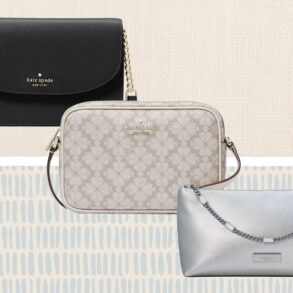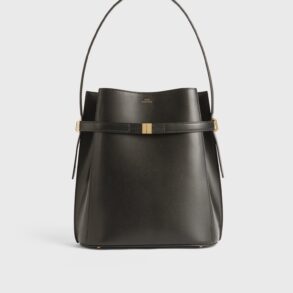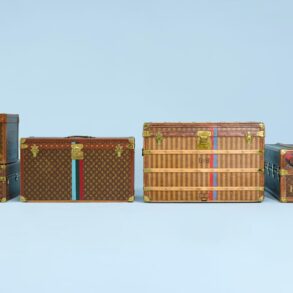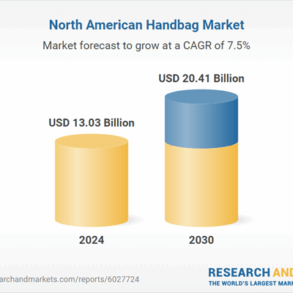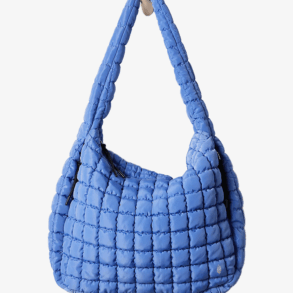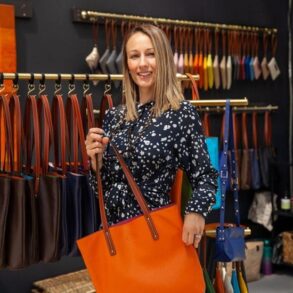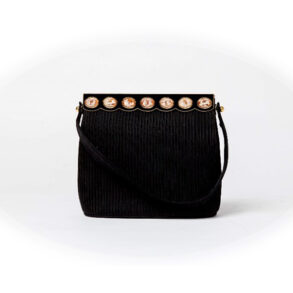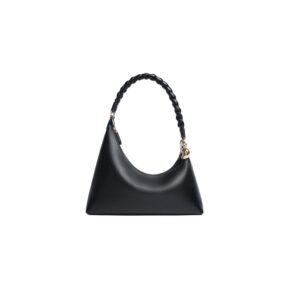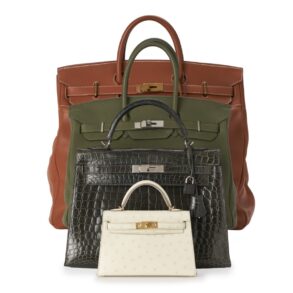Jun 11, 2025
IndexBox has just published a new report: Africa – Luggage And Handbags – Market Analysis, Forecast, Size, Trends and Insights.
The demand for luggage and handbags in Africa is on the rise, leading to an anticipated upward consumption trend over the next decade. Market performance is predicted to slow down, with a projected CAGR of +1.0% for market volume and -0.3% for market value from 2024 to 2035. By the end of 2035, the market volume is expected to reach 940M units, with a market value of $6.6B in nominal prices.
Market Forecast
Driven by increasing demand for luggage and handbags in Africa, the market is expected to continue an upward consumption trend over the next decade. Market performance is forecast to decelerate, expanding with an anticipated CAGR of +1.0% for the period from 2024 to 2035, which is projected to bring the market volume to 940M units by the end of 2035.
In value terms, the market is forecast to increase with an anticipated CAGR of -0.3% for the period from 2024 to 2035, which is projected to bring the market value to $6.6B (in nominal wholesale prices) by the end of 2035.

Consumption
Africa’s Consumption of Luggage And Handbags
After three years of growth, consumption of luggage and handbags decreased by -4% to 840M units in 2024. The total consumption volume increased at an average annual rate of +2.6% from 2013 to 2024; however, the trend pattern indicated some noticeable fluctuations being recorded throughout the analyzed period. As a result, consumption reached the peak volume of 875M units, and then fell slightly in the following year.
The value of the luggage market in Africa reduced to $6.9B in 2024, shrinking by -13.6% against the previous year. This figure reflects the total revenues of producers and importers (excluding logistics costs, retail marketing costs, and retailers’ margins, which will be included in the final consumer price). The total consumption indicated perceptible growth from 2013 to 2024: its value increased at an average annual rate of +4.6% over the last eleven-year period. The trend pattern, however, indicated some noticeable fluctuations being recorded throughout the analyzed period. Based on 2024 figures, consumption increased by +172.8% against 2016 indices. Over the period under review, the market reached the maximum level at $8B in 2023, and then shrank in the following year.
Consumption By Country
The countries with the highest volumes of consumption in 2024 were Nigeria (124M units), South Africa (82M units) and Ethiopia (74M units), with a combined 33% share of total consumption.
From 2013 to 2024, the most notable rate of growth in terms of consumption, amongst the main consuming countries, was attained by Nigeria (with a CAGR of +3.9%), while consumption for the other leaders experienced more modest paces of growth.
In value terms, the largest luggage markets in Africa were Nigeria ($1B), South Africa ($664M) and Ethiopia ($617M), with a combined 33% share of the total market.
Nigeria, with a CAGR of +5.9%, saw the highest growth rate of market size among the main consuming countries over the period under review, while market for the other leaders experienced more modest paces of growth.
In 2024, the highest levels of luggage per capita consumption was registered in South Africa (1,324 units per 1000 persons), followed by Sudan (652 units per 1000 persons), Algeria (633 units per 1000 persons) and Uganda (628 units per 1000 persons), while the world average per capita consumption of luggage was estimated at 570 units per 1000 persons.
From 2013 to 2024, the average annual rate of growth in terms of the luggage per capita consumption in South Africa amounted to +1.2%. In the other countries, the average annual rates were as follows: Sudan (+0.2% per year) and Algeria (-0.8% per year).
Production
Africa’s Production of Luggage And Handbags
In 2024, the amount of luggage and handbags produced in Africa expanded slightly to 678M units, with an increase of 4.7% on the year before. The total output volume increased at an average annual rate of +3.2% over the period from 2013 to 2024; however, the trend pattern indicated some noticeable fluctuations being recorded in certain years. The pace of growth appeared the most rapid in 2022 when the production volume increased by 11% against the previous year. Over the period under review, production reached the maximum volume in 2024 and is likely to see gradual growth in years to come.
In value terms, luggage production expanded markedly to $11B in 2024 estimated in export price. The total production indicated resilient growth from 2013 to 2024: its value increased at an average annual rate of +7.0% over the last eleven-year period. The trend pattern, however, indicated some noticeable fluctuations being recorded throughout the analyzed period. Based on 2024 figures, production increased by +53.4% against 2020 indices. The pace of growth was the most pronounced in 2016 with an increase of 46%. The level of production peaked in 2024 and is expected to retain growth in years to come.
Production By Country
The countries with the highest volumes of production in 2024 were Nigeria (116M units), Ethiopia (71M units) and Democratic Republic of the Congo (50M units), with a combined 35% share of total production. Tanzania, Kenya, Uganda, Sudan, Algeria, Morocco and Somalia lagged somewhat behind, together comprising a further 28%.
From 2013 to 2024, the most notable rate of growth in terms of production, amongst the leading producing countries, was attained by Algeria (with a CAGR of +12.1%), while production for the other leaders experienced more modest paces of growth.
Imports
Africa’s Imports of Luggage And Handbags
Luggage imports reduced notably to 173M units in 2024, with a decrease of -27.1% on the year before. Overall, imports, however, saw a relatively flat trend pattern. The pace of growth was the most pronounced in 2023 with an increase of 48% against the previous year. As a result, imports reached the peak of 237M units, and then shrank sharply in the following year.
In value terms, luggage imports reduced to $690M in 2024. Total imports indicated temperate growth from 2013 to 2024: its value increased at an average annual rate of +3.3% over the last eleven years. The trend pattern, however, indicated some noticeable fluctuations being recorded throughout the analyzed period. Based on 2024 figures, imports increased by +70.3% against 2020 indices. The pace of growth was the most pronounced in 2023 when imports increased by 34% against the previous year. As a result, imports reached the peak of $766M, and then shrank in the following year.
Imports By Country
South Africa prevails in imports structure, amounting to 87M units, which was near 50% of total imports in 2024. It was distantly followed by Egypt (10M units) and Nigeria (8.1M units), together creating an 11% share of total imports. Guinea (6.7M units), Libya (6.1M units), Ghana (4.5M units), Angola (4.3M units), Mauritius (4M units), Tanzania (4M units) and Cameroon (3.9M units) followed a long way behind the leaders.
Imports into South Africa increased at an average annual rate of +2.3% from 2013 to 2024. At the same time, Cameroon (+19.2%), Guinea (+18.6%), Nigeria (+17.2%), Tanzania (+13.6%), Egypt (+12.7%), Ghana (+5.8%) and Mauritius (+2.6%) displayed positive paces of growth. Moreover, Cameroon emerged as the fastest-growing importer imported in Africa, with a CAGR of +19.2% from 2013-2024. By contrast, Libya (-4.7%) and Angola (-5.7%) illustrated a downward trend over the same period. From 2013 to 2024, the share of South Africa, Egypt, Nigeria, Guinea, Cameroon and Tanzania increased by +8.1, +4.3, +3.8, +3.2, +1.9 and +1.7 percentage points, respectively. The shares of the other countries remained relatively stable throughout the analyzed period.
In value terms, South Africa ($122M) constitutes the largest market for imported luggage and handbags in Africa, comprising 18% of total imports. The second position in the ranking was held by Libya ($44M), with a 6.3% share of total imports. It was followed by Nigeria, with a 6.2% share.
From 2013 to 2024, the average annual growth rate of value in South Africa was relatively modest. The remaining importing countries recorded the following average annual rates of imports growth: Libya (+2.1% per year) and Nigeria (+9.8% per year).
Imports By Type
In 2024, handbags with outer surface of plastic sheeting or of textile materials (69M units) and cases and containers; trunks, suit-cases, vanity-cases, executive-cases, brief-cases, school satchels and similar containers, with outer surface of plastics or of textile materials (57M units) represented the major types of luggage and handbags in Africa, together resulting at near 73% of total imports. Handbags with outer surface of vulcanised fibre or of paperboard (18M units) took a 10% share (based on physical terms) of total imports, which put it in second place, followed by travel sets; for personal toilet, sewing, shoe or clothes cleaning (8.5%). Handbags with outer surface of leather, composition leather, or patent leather (6.1M units), cases and containers; trunks, suit-cases, vanity-cases, executive-cases, brief-cases, school satchels and similar containers, with outer surface of vulcanised fibre or of paperboard (5.4M units) and cases and containers; trunks, suit-cases, vanity-cases, executive-cases, brief-cases, school satchels and similar containers, with outer surface of leather, of composition leather or of patent leather (2.8M units) followed a long way behind the leaders.
From 2013 to 2024, the biggest increases were recorded for handbags with outer surface of leather, composition leather, or patent leather (with a CAGR of +10.3%), while purchases for the other products experienced more modest paces of growth.
In value terms, cases and containers; trunks, suit-cases, vanity-cases, executive-cases, brief-cases, school satchels and similar containers, with outer surface of plastics or of textile materials ($310M), handbags with outer surface of plastic sheeting or of textile materials ($166M) and handbags with outer surface of vulcanised fibre or of paperboard ($69M) constituted the products with the highest levels of imports in 2024, with a combined 79% share of total imports.
Among the main imported products, handbags with outer surface of plastic sheeting or of textile materials, with a CAGR of +5.5%, recorded the highest rates of growth with regard to the value of imports, over the period under review, while purchases for the other products experienced more modest paces of growth.
Import Prices By Type
The import price in Africa stood at $4 per unit in 2024, growing by 24% against the previous year. Over the period from 2013 to 2024, it increased at an average annual rate of +2.5%. As a result, import price reached the peak level and is likely to continue growth in the immediate term.
Prices varied noticeably by the product type; the product with the highest price was handbags with outer surface of leather, composition leather, or patent leather ($10 per unit), while the price for travel sets; for personal toilet, sewing, shoe or clothes cleaning ($1.3 per unit) was amongst the lowest.
From 2013 to 2024, the most notable rate of growth in terms of prices was attained by cases and containers; trunks, suit-cases, vanity-cases, executive-cases, brief-cases, school satchels and similar containers, with outer surface of plastics or of textile materials (+5.9%), while the other products experienced more modest paces of growth.
Import Prices By Country
In 2024, the import price in Africa amounted to $4 per unit, growing by 24% against the previous year. Over the last eleven-year period, it increased at an average annual rate of +2.5%. As a result, import price reached the peak level and is likely to continue growth in the immediate term.
Prices varied noticeably by country of destination: amid the top importers, the country with the highest price was Cameroon ($7.9 per unit), while Angola ($1.2 per unit) was amongst the lowest.
From 2013 to 2024, the most notable rate of growth in terms of prices was attained by Libya (+7.1%), while the other leaders experienced mixed trends in the import price figures.
Exports
Africa’s Exports of Luggage And Handbags
Luggage exports rose sharply to 10M units in 2024, picking up by 8.7% against the year before. Overall, exports, however, recorded a relatively flat trend pattern. The most prominent rate of growth was recorded in 2022 when exports increased by 28%. Over the period under review, the exports hit record highs at 15M units in 2016; however, from 2017 to 2024, the exports stood at a somewhat lower figure.
In value terms, luggage exports dropped to $116M in 2024. In general, exports, however, recorded a relatively flat trend pattern. The pace of growth appeared the most rapid in 2022 when exports increased by 21% against the previous year. The level of export peaked at $137M in 2014; however, from 2015 to 2024, the exports remained at a lower figure.
Exports By Country
In 2024, South Africa (4.9M units) represented the largest exporter of luggage and handbags, achieving 47% of total exports. Morocco (1.9M units) took the second position in the ranking, followed by Tunisia (1.2M units) and Mauritius (0.9M units). All these countries together took approx. 39% share of total exports. Liberia (293K units) and Rwanda (229K units) held a minor share of total exports.
South Africa experienced a relatively flat trend pattern with regard to volume of exports of luggage and handbags. At the same time, Liberia (+46.4%), Morocco (+9.7%) and Mauritius (+4.0%) displayed positive paces of growth. Moreover, Liberia emerged as the fastest-growing exporter exported in Africa, with a CAGR of +46.4% from 2013-2024. By contrast, Tunisia (-4.8%) and Rwanda (-13.2%) illustrated a downward trend over the same period. Morocco (+12 p.p.), Mauritius (+3.5 p.p.) and Liberia (+2.8 p.p.) significantly strengthened its position in terms of the total exports, while Tunisia and Rwanda saw its share reduced by -7% and -7.5% from 2013 to 2024, respectively. The shares of the other countries remained relatively stable throughout the analyzed period.
In value terms, the largest luggage supplying countries in Africa were Tunisia ($40M), Morocco ($28M) and South Africa ($21M), together comprising 77% of total exports. Mauritius, Rwanda and Liberia lagged somewhat behind, together accounting for a further 7.6%.
Liberia, with a CAGR of +20.5%, recorded the highest rates of growth with regard to the value of exports, among the main exporting countries over the period under review, while shipments for the other leaders experienced more modest paces of growth.
Exports By Type
In 2024, handbags with outer surface of plastic sheeting or of textile materials (2.9M units), cases and containers; trunks, suit-cases, vanity-cases, executive-cases, brief-cases, school satchels and similar containers, with outer surface of plastics or of textile materials (2.1M units), handbags with outer surface of leather, composition leather, or patent leather (1.7M units), travel sets; for personal toilet, sewing, shoe or clothes cleaning (1.6M units) and handbags with outer surface of vulcanised fibre or of paperboard (1.2M units) was the major type of luggage and handbags in Africa, committing 90% of total export. It was distantly followed by cases and containers; trunks, suit-cases, vanity-cases, executive-cases, brief-cases, school satchels and similar containers, with outer surface of vulcanised fibre or of paperboard (686K units), achieving a 6.5% share of total exports. Cases and containers; trunks, suit-cases, vanity-cases, executive-cases, brief-cases, school satchels and similar containers, with outer surface of leather, of composition leather or of patent leather (312K units) followed a long way behind the leaders.
From 2013 to 2024, the biggest increases were recorded for handbags with outer surface of plastic sheeting or of textile materials (with a CAGR of +6.8%), while shipments for the other products experienced more modest paces of growth.
In value terms, handbags with outer surface of leather, composition leather, or patent leather ($64M) remains the largest type of luggage and handbags supplied in Africa, comprising 56% of total exports. The second position in the ranking was held by handbags with outer surface of plastic sheeting or of textile materials ($17M), with a 15% share of total exports. It was followed by handbags with outer surface of vulcanised fibre or of paperboard, with a 10% share.
For handbags with outer surface of leather, composition leather, or patent leather, exports remained relatively stable over the period from 2013-2024. For the other products, the average annual rates were as follows: handbags with outer surface of plastic sheeting or of textile materials (-2.4% per year) and handbags with outer surface of vulcanised fibre or of paperboard (+3.3% per year).
Export Prices By Type
The export price in Africa stood at $11 per unit in 2024, which is down by -18.4% against the previous year. In general, the export price, however, saw a relatively flat trend pattern. The most prominent rate of growth was recorded in 2023 an increase of 28%. As a result, the export price reached the peak level of $14 per unit, and then dropped dramatically in the following year.
There were significant differences in the average prices amongst the major exported products. In 2024, the product with the highest price was handbags with outer surface of leather, composition leather, or patent leather ($38 per unit), while the average price for exports of travel sets; for personal toilet, sewing, shoe or clothes cleaning ($1.8 per unit) was amongst the lowest.
From 2013 to 2024, the most notable rate of growth in terms of prices was attained by travel sets; for personal toilet, sewing, shoe or clothes cleaning (+6.0%), while the other products experienced more modest paces of growth.
Export Prices By Country
The export price in Africa stood at $11 per unit in 2024, shrinking by -18.4% against the previous year. Overall, the export price, however, recorded a relatively flat trend pattern. The growth pace was the most rapid in 2023 an increase of 28% against the previous year. As a result, the export price attained the peak level of $14 per unit, and then shrank remarkably in the following year.
There were significant differences in the average prices amongst the major exporting countries. In 2024, amid the top suppliers, the country with the highest price was Tunisia ($33 per unit), while Liberia ($610 per thousand units) was amongst the lowest.
From 2013 to 2024, the most notable rate of growth in terms of prices was attained by Rwanda (+17.4%), while the other leaders experienced more modest paces of growth.
Source: IndexBox Market Intelligence Platform
This post was originally published on this site be sure to check out more of their content.






